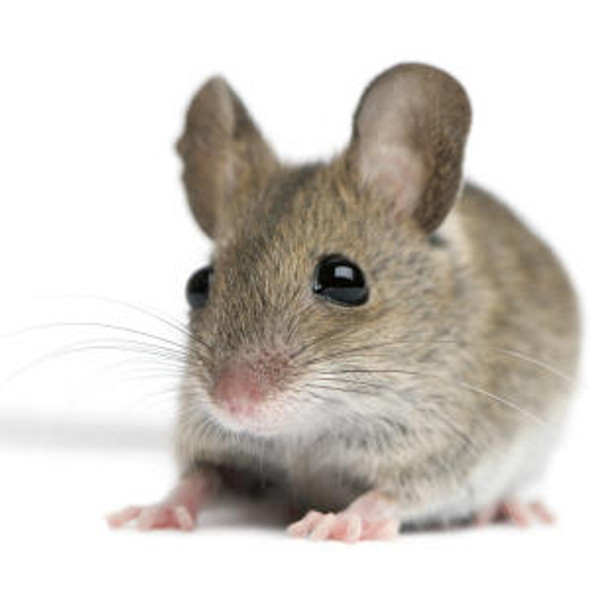Human Mast/stem cell growth factor receptor Kit (KIT) ELISA Kit (HUEB0147)
- SKU:
- HUEB0147
- Product Type:
- ELISA Kit
- Size:
- 96 Assays
- Uniprot:
- P10721
- Range:
- 3.12-200 ng/mL
- ELISA Type:
- Sandwich
- Synonyms:
- SCFR, c-Kit
- Reactivity:
- Human
Description
Human Mast/stem cell growth factor receptor Kit (KIT) ELISA Kit
The Human Mast Stem Cell Growth Factor Receptor Kit is an advanced ELISA kit designed for the precise measurement of growth factor receptor levels in human serum, plasma, and cell culture supernatants. With its high sensitivity and specificity, this kit delivers accurate and consistent results, making it an essential tool for a variety of research studies.Mast stem cell growth factor receptors play a critical role in regulating cell growth, differentiation, and proliferation. Their dysregulation has been associated with various diseases, including cancer, inflammatory disorders, and autoimmune conditions.
By accurately measuring these receptors, researchers can gain valuable insights into disease mechanisms and potential therapeutic targets.This ELISA kit offers a straightforward and reliable method for quantifying mast stem cell growth factor receptors, allowing researchers to study their role in various physiological and pathological processes. With its proven performance and ease of use, this kit is a valuable resource for scientists working in the fields of cell biology, cancer research, and immunology.
| Product Name: | Human Mast/stem cell growth factor receptor Kit (KIT) ELISA Kit |
| SKU: | HUEB0147 |
| Size: | 96T |
| Target: | Human Mast/stem cell growth factor receptor Kit (KIT) |
| Synonyms: | Piebald trait protein, Proto-oncogene c-Kit, Tyrosine-protein kinase Kit, p145 c-kit, v-kit Hardy-Zuckerman 4 feline sarcoma viral oncogene homolog, PBT, CD117, SCFR, SCFR |
| Assay Type: | Sandwich |
| Detection Method: | ELISA |
| Reactivity: | Human |
| Detection Range: | 3.12-200ng/mL |
| Sensitivity: | 1.2ng/mL |
| Intra CV: | 5.7% | ||||||||||||||||||||
| Inter CV: | 9.7% | ||||||||||||||||||||
| Linearity: |
| ||||||||||||||||||||
| Recovery: |
| ||||||||||||||||||||
| Function: | Tyrosine-protein kinase that acts as cell-surface receptor for the cytokine KITLG/SCF and plays an essential role in the regulation of cell survival and proliferation, hematopoiesis, stem cell maintenance, gametogenesis, mast cell development, migration and function, and in melanogenesis. In response to KITLG/SCF binding, KIT can activate several signaling pathways. Phosphorylates PIK3R1, PLCG1, SH2B2/APS and CBL. Activates the AKT1 signaling pathway by phosphorylation of PIK3R1, the regulatory subunit of phosphatidylinositol 3-kinase. Activated KIT also transmits signals via GRB2 and activation of RAS, RAF1 and the MAP kinases MAPK1/ERK2 and/or MAPK3/ERK1. Promotes activation of STAT family members STAT1, STAT3, STAT5A and STAT5B. Activation of PLCG1 leads to the production of the cellular signaling molecules diacylglycerol and inositol 1,4,5-trisphosphate. KIT signaling is modulated by protein phosphatases, and by rapid internalization and degradation of the receptor. Activated KIT promotes phosphorylation of the protein phosphatases PTPN6/SHP-1 and PTPRU, and of the transcription factors STAT1, STAT3, STAT5A and STAT5B. Promotes phosphorylation of PIK3R1, CBL, CRK (isoform Crk-II), LYN, MAPK1/ERK2 and/or MAPK3/ERK1, PLCG1, SRC and SHC1. |
| Uniprot: | P10721 |
| Sample Type: | Serum, plasma, tissue homogenates, cell culture supernates and other biological fluids |
| Specificity: | Natural and recombinant human Mast/stem cell growth factor receptor Kit |
| Sub Unit: | Monomer in the absence of bound KITLG/SCF. Homodimer in the presence of bound KITLG/SCF, forming a heterotetramer with two KITLG/SCF molecules. Interacts (via phosphorylated tyrosine residues) with the adapter proteins GRB2 and GRB7 (via SH2 domain), and SH2B2/APS. Interacts (via C-terminus) with MPDZ (via the tenth PDZ domain). Interacts (via phosphorylated tyrosine residues) with PIK3R1 and PIK3 catalytic subunit. Interacts (via phosphorylated tyrosine) with CRK (isoform Crk-II), FYN, SHC1 and MATK/CHK (via SH2 domain). Interacts with LYN and FES/FPS. Interacts (via phosphorylated tyrosine residues) with the protein phosphatases PTPN6/SHP-1 (via SH2 domain), PTPN11/SHP-2 (via SH2 domain) and PTPRU. Interacts with PLCG1. Interacts with DOK1 and TEC. Interacts (KITLG/SCF-bound) with IL1RL1. Interacts with IL1RAP (independent of stimulation with KITLG/SCF). A mast cell-specific KITLG/SCF-induced interleukin-33 signaling complex contains IL1RL1, IL1RAP, KIT and MYD88. |
| Research Area: | Signal Transduction |
| Subcellular Location: | Isoform 3 Cytoplasm Detected in the cytoplasm of spermatozoa, especially in the equatorial and subacrosomal region of the sperm head. |
| Storage: | Please see kit components below for exact storage details |
| Note: | For research use only |
| UniProt Protein Function: | Kit: a receptor tyrosine kinase and a member of the subfamily that includes PDGF, CSF-1 and FLT-3/flk-2 receptors. Receptor for stem cell factor. Plays a critical role in hematopoietic stem cell, mast cell, melanocyte and germ cell development. Ligand binding induces autophosphorylation, dimerization and activation, leading to the recruitment and phosphorylation of downstream SH2-containing signaling components including PLC-gamma, PI3 kinase p85, SHP2 and CrkL, linking c-Kit to various cell signaling pathways. Molecular lesions that impair the kinase activity of c-Kit are associated with a variety of developmental disorders, while mutations that constitutively activate c-Kit can lead to hyperplasia and tumorigenesis. Activating mutations cause >90% of gastrointestinal stromal tumors (GIST); successfully treated with inhibitors Gleevec (imatinib, Glivec) and Sutent (Sutinib, SU11248). Activating mutations also induce mastocytosis. Autocrine/paracrine stimulation may drive some lung and other tumors. Loss of expression associated with melanoma progression. Familial loss of function mutations cause piebaldism, with defects in hair and skin pigmentation due to lack of melanocytes. |
| UniProt Protein Details: | Protein type:EC 2.7.10.1; Protein kinase, TK; Protein kinase, tyrosine (receptor); Kinase, protein; Oncoprotein; Membrane protein, integral; TK group; PDGFR family Chromosomal Location of Human Ortholog: 4q12 Cellular Component: extracellular space; internal side of plasma membrane; mast cell granule; integral to membrane; acrosome; plasma membrane; intercellular junction; external side of plasma membrane Molecular Function:protein binding; protein homodimerization activity; protease binding; cytokine binding; metal ion binding; protein-tyrosine kinase activity; stem cell factor receptor activity; transmembrane receptor protein tyrosine kinase activity; receptor signaling protein tyrosine kinase activity; ATP binding Biological Process: nerve growth factor receptor signaling pathway; activation of MAPK activity; somatic stem cell maintenance; germ cell programmed cell death; positive regulation of JAK-STAT cascade; lymphoid progenitor cell differentiation; positive regulation of long-term neuronal synaptic plasticity; positive regulation of tyrosine phosphorylation of Stat3 protein; regulation of cell shape; epithelial cell proliferation; germ cell migration; somatic stem cell division; erythrocyte differentiation; T cell differentiation; fibroblast growth factor receptor signaling pathway; mast cell chemotaxis; embryonic hemopoiesis; stem cell differentiation; detection of mechanical stimulus involved in sensory perception of sound; positive regulation of phosphoinositide 3-kinase cascade; positive regulation of tyrosine phosphorylation of Stat1 protein; immature B cell differentiation; regulation of pigmentation during development; glycosphingolipid metabolic process; positive regulation of transcription factor activity; mast cell cytokine production; peptidyl-tyrosine phosphorylation; protein amino acid autophosphorylation; signal transduction; ovarian follicle development; positive regulation of MAPKKK cascade; myeloid progenitor cell differentiation; melanocyte differentiation; positive regulation of cell proliferation; negative regulation of programmed cell death; visual learning; hemopoiesis; inflammatory response; positive regulation of Notch signaling pathway; lamellipodium biogenesis; epidermal growth factor receptor signaling pathway; phosphoinositide-mediated signaling; dendritic cell cytokine production; cytokine and chemokine mediated signaling pathway; male gonad development; stem cell maintenance; positive regulation of phosphoinositide 3-kinase activity; mast cell degranulation; regulation of cell proliferation; positive regulation of pseudopodium formation; positive regulation of tyrosine phosphorylation of Stat5 protein; gut development; pigmentation; actin cytoskeleton reorganization; innate immune response; spermatogenesis; spermatid development; positive regulation of cell migration Disease: Gastrointestinal Stromal Tumor; Mast Cell Disease; Piebald Trait; Testicular Germ Cell Tumor |
| NCBI Summary: | This gene encodes the human homolog of the proto-oncogene c-kit. C-kit was first identified as the cellular homolog of the feline sarcoma viral oncogene v-kit. This protein is a type 3 transmembrane receptor for MGF (mast cell growth factor, also known as stem cell factor). Mutations in this gene are associated with gastrointestinal stromal tumors, mast cell disease, acute myelogenous lukemia, and piebaldism. Multiple transcript variants encoding different isoforms have been found for this gene. [provided by RefSeq, Jul 2008] |
| UniProt Code: | P10721 |
| NCBI GenInfo Identifier: | 125472 |
| NCBI Gene ID: | 3815 |
| NCBI Accession: | P10721.1 |
| UniProt Secondary Accession: | P10721,Q6IQ28, Q99662, Q9UM99, B5A956, D5LXN2, D5M931 F5H8F8, |
| UniProt Related Accession: | P10721 |
| Molecular Weight: | |
| NCBI Full Name: | Mast/stem cell growth factor receptor Kit |
| NCBI Synonym Full Names: | v-kit Hardy-Zuckerman 4 feline sarcoma viral oncogene homolog |
| NCBI Official Symbol: | KIT |
| NCBI Official Synonym Symbols: | PBT; SCFR; C-Kit; CD117 |
| NCBI Protein Information: | mast/stem cell growth factor receptor Kit; p145 c-kit; proto-oncogene c-Kit; piebald trait protein; soluble KIT variant 1; tyrosine-protein kinase Kit; proto-oncogene tyrosine-protein kinase Kit; v-kit Hardy-Zuckerman 4 feline sarcoma viral oncogene-like protein |
| UniProt Protein Name: | Mast/stem cell growth factor receptor Kit |
| UniProt Synonym Protein Names: | Piebald trait protein; PBT; Proto-oncogene c-Kit; Tyrosine-protein kinase Kit; p145 c-kit; v-kit Hardy-Zuckerman 4 feline sarcoma viral oncogene homolog; CD_antigen: CD117 |
| Protein Family: | Mast/stem cell growth factor receptor |
| UniProt Gene Name: | KIT |
| UniProt Entry Name: | KIT_HUMAN |
| Component | Quantity (96 Assays) | Storage |
| ELISA Microplate (Dismountable) | 8×12 strips | -20°C |
| Lyophilized Standard | 2 | -20°C |
| Sample Diluent | 20ml | -20°C |
| Assay Diluent A | 10mL | -20°C |
| Assay Diluent B | 10mL | -20°C |
| Detection Reagent A | 120µL | -20°C |
| Detection Reagent B | 120µL | -20°C |
| Wash Buffer | 30mL | 4°C |
| Substrate | 10mL | 4°C |
| Stop Solution | 10mL | 4°C |
| Plate Sealer | 5 | - |
Other materials and equipment required:
- Microplate reader with 450 nm wavelength filter
- Multichannel Pipette, Pipette, microcentrifuge tubes and disposable pipette tips
- Incubator
- Deionized or distilled water
- Absorbent paper
- Buffer resevoir
*Note: The below protocol is a sample protocol. Protocols are specific to each batch/lot. For the correct instructions please follow the protocol included in your kit.
Allow all reagents to reach room temperature (Please do not dissolve the reagents at 37°C directly). All the reagents should be mixed thoroughly by gently swirling before pipetting. Avoid foaming. Keep appropriate numbers of strips for 1 experiment and remove extra strips from microtiter plate. Removed strips should be resealed and stored at -20°C until the kits expiry date. Prepare all reagents, working standards and samples as directed in the previous sections. Please predict the concentration before assaying. If values for these are not within the range of the standard curve, users must determine the optimal sample dilutions for their experiments. We recommend running all samples in duplicate.
| Step | |
| 1. | Add Sample: Add 100µL of Standard, Blank, or Sample per well. The blank well is added with Sample diluent. Solutions are added to the bottom of micro ELISA plate well, avoid inside wall touching and foaming as possible. Mix it gently. Cover the plate with sealer we provided. Incubate for 120 minutes at 37°C. |
| 2. | Remove the liquid from each well, don't wash. Add 100µL of Detection Reagent A working solution to each well. Cover with the Plate sealer. Gently tap the plate to ensure thorough mixing. Incubate for 1 hour at 37°C. Note: if Detection Reagent A appears cloudy warm to room temperature until solution is uniform. |
| 3. | Aspirate each well and wash, repeating the process three times. Wash by filling each well with Wash Buffer (approximately 400µL) (a squirt bottle, multi-channel pipette,manifold dispenser or automated washer are needed). Complete removal of liquid at each step is essential. After the last wash, completely remove remaining Wash Buffer by aspirating or decanting. Invert the plate and pat it against thick clean absorbent paper. |
| 4. | Add 100µL of Detection Reagent B working solution to each well. Cover with the Plate sealer. Incubate for 60 minutes at 37°C. |
| 5. | Repeat the wash process for five times as conducted in step 3. |
| 6. | Add 90µL of Substrate Solution to each well. Cover with a new Plate sealer and incubate for 10-20 minutes at 37°C. Protect the plate from light. The reaction time can be shortened or extended according to the actual color change, but this should not exceed more than 30 minutes. When apparent gradient appears in standard wells, user should terminatethe reaction. |
| 7. | Add 50µL of Stop Solution to each well. If color change does not appear uniform, gently tap the plate to ensure thorough mixing. |
| 8. | Determine the optical density (OD value) of each well at once, using a micro-plate reader set to 450 nm. User should open the micro-plate reader in advance, preheat the instrument, and set the testing parameters. |
| 9. | After experiment, store all reagents according to the specified storage temperature respectively until their expiry. |
When carrying out an ELISA assay it is important to prepare your samples in order to achieve the best possible results. Below we have a list of procedures for the preparation of samples for different sample types.
| Sample Type | Protocol |
| Serum | If using serum separator tubes, allow samples to clot for 30 minutes at room temperature. Centrifuge for 10 minutes at 1,000x g. Collect the serum fraction and assay promptly or aliquot and store the samples at -80°C. Avoid multiple freeze-thaw cycles. If serum separator tubes are not being used, allow samples to clot overnight at 2-8°C. Centrifuge for 10 minutes at 1,000x g. Remove serum and assay promptly or aliquot and store the samples at -80°C. Avoid multiple freeze-thaw cycles. |
| Plasma | Collect plasma using EDTA or heparin as an anticoagulant. Centrifuge samples at 4°C for 15 mins at 1000 × g within 30 mins of collection. Collect the plasma fraction and assay promptly or aliquot and store the samples at -80°C. Avoid multiple freeze-thaw cycles. Note: Over haemolysed samples are not suitable for use with this kit. |
| Urine & Cerebrospinal Fluid | Collect the urine (mid-stream) in a sterile container, centrifuge for 20 mins at 2000-3000 rpm. Remove supernatant and assay immediately. If any precipitation is detected, repeat the centrifugation step. A similar protocol can be used for cerebrospinal fluid. |
| Cell culture supernatant | Collect the cell culture media by pipette, followed by centrifugation at 4°C for 20 mins at 1500 rpm. Collect the clear supernatant and assay immediately. |
| Cell lysates | Solubilize cells in lysis buffer and allow to sit on ice for 30 minutes. Centrifuge tubes at 14,000 x g for 5 minutes to remove insoluble material. Aliquot the supernatant into a new tube and discard the remaining whole cell extract. Quantify total protein concentration using a total protein assay. Assay immediately or aliquot and store at ≤ -20 °C. |
| Tissue homogenates | The preparation of tissue homogenates will vary depending upon tissue type. Rinse tissue with 1X PBS to remove excess blood & homogenize in 20ml of 1X PBS (including protease inhibitors) and store overnight at ≤ -20°C. Two freeze-thaw cycles are required to break the cell membranes. To further disrupt the cell membranes you can sonicate the samples. Centrifuge homogenates for 5 mins at 5000xg. Remove the supernatant and assay immediately or aliquot and store at -20°C or -80°C. |
| Tissue lysates | Rinse tissue with PBS, cut into 1-2 mm pieces, and homogenize with a tissue homogenizer in PBS. Add an equal volume of RIPA buffer containing protease inhibitors and lyse tissues at room temperature for 30 minutes with gentle agitation. Centrifuge to remove debris. Quantify total protein concentration using a total protein assay. Assay immediately or aliquot and store at ≤ -20 °C. |
| Breast Milk | Collect milk samples and centrifuge at 10,000 x g for 60 min at 4°C. Aliquot the supernatant and assay. For long term use, store samples at -80°C. Minimize freeze/thaw cycles. |









